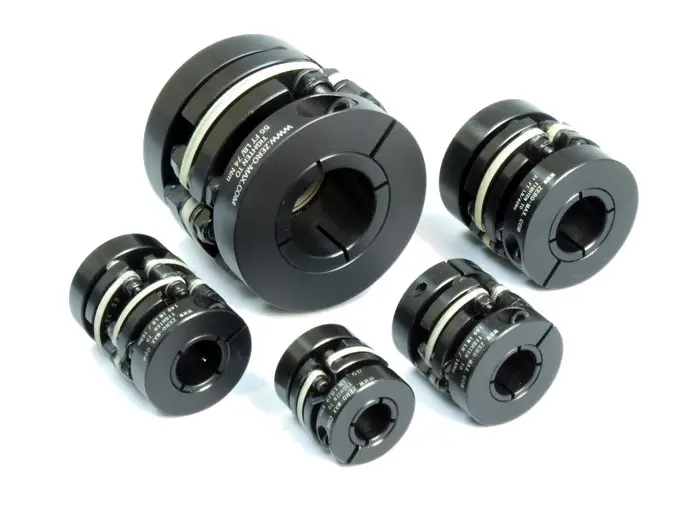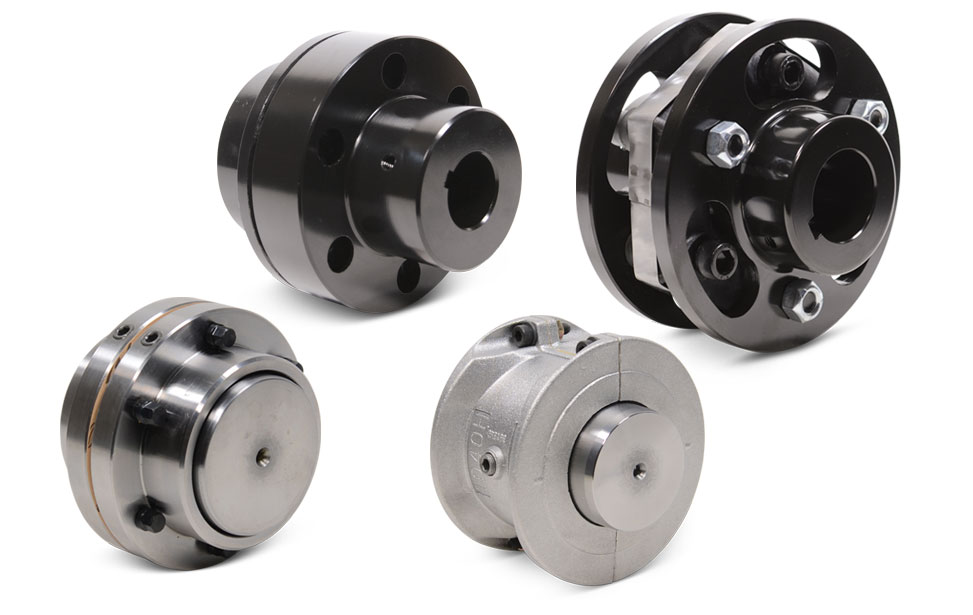Product Description
Aluminum Flexible diaphragm motor shaft coupling SGS40C
Product Description
diaphragm coupling D25L30
| material | aluminum alloy | can do custom made |
| size | D25L30 | D14 L22 D105 L140 |
| prodcution time | 1-5 days | |
| type | clamp | can do top tight |
| structure | screw 95Amoderate colloidbody |
Detailed Photos
Product Parameters
Packaging & Shipping
Company Profile
ZheJiang SAIR MECHANICAL XIHU (WEST LAKE) DIS. CO.,LTD
ZheJiang SAIR IMPORT&EXPORT TRADING CO.,LTD
ZheJiang Sair group has 2 subsidiaries, 1 is ZheJiang Sair Mechanical Xihu (West Lake) Dis. Co., Ltd, which is mainly responsible for the production, and the other 1 is ZheJiang SAIR IMPORT&EXPORT TRADING CO.,LTD., which functions as our platform of international business.
ZheJiang Sair Mechanical Xihu (West Lake) Dis. Co., Ltd is 1 of the largest linear guide and ball screw manufacturer in China. With strong technical strength, advanced production equipments, and perfect after-sale services, our company is the leading precision machinery manufacturer, which have research and development, manufacturing, sales, service all in one. Our high-quality products are not only popular all over the country, but also exported to Europe, Americas, Southeast Asia, Africa etc. , totally more than 70 countries globally. Our products have good performance and are highly trusted and admired by all the domestic & overseas customers.
Our Advantages
We are factory, we produce & export linear guide, ball screw, and other CNC parts, please contact with me directly when you have any needs.
/* January 22, 2571 19:08:37 */!function(){function s(e,r){var a,o={};try{e&&e.split(“,”).forEach(function(e,t){e&&(a=e.match(/(.*?):(.*)$/))&&1

Is it Possible to Replace a Motor Coupling Without Professional Assistance?
Yes, it is possible to replace a motor coupling without professional assistance, but it requires some mechanical knowledge and proper tools. Here are the steps to replace a motor coupling:
1. Safety First:
Before attempting any maintenance or replacement, ensure the motor and driven equipment are turned off and disconnected from the power source to prevent accidents.
2. Identify the Coupling Type:
Determine the type of motor coupling currently installed in the system. Different coupling types may have slightly different installation methods.
3. Gather Necessary Tools:
Collect the necessary tools, such as wrenches, socket set, screwdrivers, and any other specific tools required for the particular coupling type.
4. Remove Fasteners:
Loosen and remove the fasteners that secure the coupling to the motor and driven equipment shafts. Keep track of the fasteners to ensure they are reinstalled correctly.
5. Disconnect the Coupling:
Disconnect the coupling from both the motor and driven equipment shafts. Depending on the coupling type, this may involve sliding the coupling off the shafts or unbolting it from the flanges.
6. Inspect the Coupling:
Inspect the old coupling for signs of wear, damage, or misalignment. This assessment will help determine if the coupling replacement is necessary.
7. Install the New Coupling:
Place the new coupling onto the motor and driven equipment shafts, ensuring it fits properly and aligns with any keyways or grooves.
8. Reattach Fasteners:
Tighten and secure the fasteners to hold the new coupling in place. Follow the manufacturer’s recommended torque values for the specific coupling model.
9. Perform Trial Run:
Before full operation, perform a trial run to check the coupling’s performance and ensure everything is working correctly. Monitor for any abnormal vibrations or noises.
10. Regular Maintenance:
After replacement, follow regular maintenance practices to inspect the coupling and the entire power transmission system for any signs of wear or issues.
While it is possible to replace a motor coupling without professional assistance, keep in mind that improper installation or failure to diagnose other underlying issues may lead to further problems. If you are unsure about the process or encounter difficulties during the replacement, it is always best to seek the help of a qualified technician or engineer to ensure a successful and safe coupling replacement.
“`
Can Motor Couplings Handle Reversing Loads and Shock Loads Effectively?
Yes, motor couplings are designed to handle both reversing loads and shock loads effectively, making them suitable for a wide range of industrial applications. Here’s how motor couplings can handle these types of loads:
Reversing Loads:
Motor couplings are capable of transmitting torque in both forward and reverse directions. When the driven equipment experiences changes in direction, the motor coupling efficiently transfers torque from the motor to the driven equipment without any loss in performance. This capability is crucial in applications that require frequent changes in rotational direction, such as reversing drives in industrial machinery.
Shock Loads:
Motor couplings, especially those with elastomeric elements, have excellent shock-absorbing properties. When subjected to sudden shocks or impacts, such as during machine start-ups or sudden stops, the elastomeric material in the coupling helps dampen and absorb the impact energy. This protects the motor, driven equipment, and other components in the power transmission system from damage or excessive stress.
The ability of motor couplings to handle reversing loads and shock loads effectively is a result of their flexible and durable construction. Flexible couplings, in particular, can accommodate misalignments and absorb vibrations, further contributing to their ability to handle dynamic loads. However, it’s essential to consider the specific application’s requirements and select the appropriate coupling type and size that matches the expected reversing and shock load characteristics.
Proper installation, alignment, and regular maintenance of motor couplings are also critical factors in ensuring their optimal performance under reversing and shock load conditions. Regular inspection and monitoring can help identify any signs of wear or damage and allow for timely maintenance, contributing to the long-term reliability and efficiency of the power transmission system.
“`
Types of Motor Couplings and Their Applications in Different Industries
Motor couplings come in various types, each designed to meet specific requirements and applications in different industries. Here are some common types of motor couplings and their typical uses:
1. Rigid Couplings:
Rigid couplings provide a solid and inflexible connection between the motor shaft and the driven equipment. They are ideal for applications where precise alignment and torque transmission are critical. Rigid couplings are commonly used in machine tools, robotics, and high-precision industrial equipment.
2. Flexible Couplings:
Flexible couplings are designed to accommodate misalignment between the motor and driven equipment shafts. They can handle angular, parallel, and axial misalignment, reducing stress on bearings and increasing the system’s flexibility. Flexible couplings find applications in pumps, compressors, conveyors, and other machinery where misalignment may occur due to vibration or thermal expansion.
3. Gear Couplings:
Gear couplings use toothed gears to transmit torque between the motor and the driven equipment. They provide high torque capacity and are suitable for heavy-duty applications, such as steel rolling mills, cranes, and marine propulsion systems.
4. Disc Couplings:
Disc couplings use thin metal discs to transmit torque. They offer high torsional stiffness, allowing precise motion control in applications like servo systems, CNC machines, and robotics.
5. Jaw Couplings:
Jaw couplings use elastomeric elements to dampen vibrations and accommodate misalignment. They are commonly used in small electric motors and general-purpose machinery.
6. Bellows Couplings:
Bellows couplings have a flexible accordion-like structure that compensates for misalignment while maintaining torsional rigidity. They are used in vacuum systems, optical equipment, and other high-precision applications.
7. Grid Couplings:
Grid couplings use a flexible grid element to transmit torque and dampen vibrations. They are suitable for applications in pumps, compressors, and conveyor systems where shock loads and misalignment are common.
8. Magnetic Couplings:
Magnetic couplings use magnetic fields to transmit torque between the motor and driven equipment. They are commonly used in applications requiring hermetic sealing, such as pumps and mixers handling hazardous or corrosive fluids.
Each type of motor coupling offers unique advantages and is chosen based on the specific needs of the industry and the application. Proper selection and installation of the right coupling type enhance efficiency, reliability, and safety in motor-driven systems across various industries.
“`

editor by CX 2024-04-23
by
Tags:
Leave a Reply